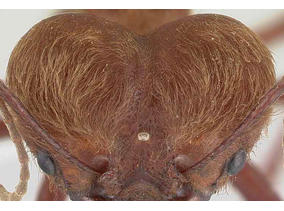TAXA (also search by using taxonomy search bar in header)
Atta cephalotes (Linnaeus, 1758)
ระบบการเรียกชื่อสิ่งมีชีวิตแบบทวินาม
เนื้อหาโดยรวม
Atta cephalotes is the most widely distributed species of leaf cutting ant. It occurs from southernmost Mexico to Ecuador and Brazil, and from the Lesser Antilles as far north as Barbados (Hölldobler & Wilson, 1990). An apparently disjunct population occurs in the Atlantic Coastal Forests of Brazil (Solomon, 2007). The species is widely regarded as a significant pest on crops including citrus, coffee, cocoa and ornamentals (Cherrett, 1986; Cherrett & Peregrine, 1976). The ecological success and ubiquity of A. cephalotes is owed in large part to its broad niche tolerance with respect to both nesting habitats and diet breadth (Solomon, 2007). The species has evolved to specialize in forest gaps, and consequently thrives in disturbed habitats such as farms and plantations (Cherrett & Peregrine, 1976). Niche modeling suggests that the current range of A. cephalotes is limited by dispersal constraints rather than suitable habitat (Solomon, 2007), and could cause significant ecological and agricultural devastation should it become introduced elsewhere (Hölldobler & Wilson, 1990; Mikheyev, 2008). A pest risk assessment of unprocessed Eucalyptus concluded the introduction of South American Atta species into the United States was a low probability (Kliejunas et al., 2001).






